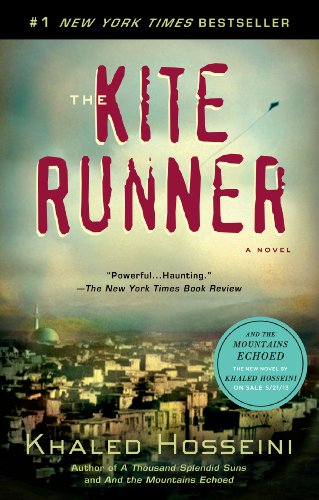All Nonfiction
- Bullying
- Books
- Academic
- Author Interviews
- Celebrity interviews
- College Articles
- College Essays
- Educator of the Year
- Heroes
- Interviews
- Memoir
- Personal Experience
- Sports
- Travel & Culture
All Opinions
- Bullying
- Current Events / Politics
- Discrimination
- Drugs / Alcohol / Smoking
- Entertainment / Celebrities
- Environment
- Love / Relationships
- Movies / Music / TV
- Pop Culture / Trends
- School / College
- Social Issues / Civics
- Spirituality / Religion
- Sports / Hobbies
All Hot Topics
- Bullying
- Community Service
- Environment
- Health
- Letters to the Editor
- Pride & Prejudice
- What Matters
- Back
Summer Guide
- Program Links
- Program Reviews
- Back
College Guide
- College Links
- College Reviews
- College Essays
- College Articles
- Back
The Kite Runner by Khaled Hosseini
Violence and Redemption: Afghanistan in Full
Amir, the main character of Khaled Hosseini’s debut novel The Kite Runner, can never work hard enough to please his only family member, a father who sees Amir as small and weak. He spends his time buried in books or exploring Kabul with a family servant, Hassan, instead of with other boys his age. He finds no enjoyment or success in sports, except for kite fighting, a decades-old Afghan tradition. When the time comes for the local tournament, Amir knows that with a win, he will prove himself to his father and to the community. When his kite first lifts into the air, it triggers a free fall of events, that—like defeated kites—tumble down, their owners waiting helplessly below.
In the opening pages, Amir is a well-off boy, an insecure and uncertain child who tests Hassan, his only friend, with verbal taunts and questions to confirm his own superiority and power and to comfort himself. But as the novel draws on, Russian forces invade Afghanistan and force Amir away from home. Through his journeys, he learns to find meaning in friends, family, and even love, and a character readers once flinched at for his cruelty evolves into one who will be appreciated for his true self, a person who notices, feels, and attempts to help the world around him.
Hosseini’s prose is stark but beautiful, echoing the Middle Eastern countries central to the novel. Every description is short and simple but conjures up strong images in a reader’s mind that cannot be forgotten: the “blue kite spinning wildly,” “melting silver” rain, and the “crumbling mud wall” all imprint themselves in one’s mind’s eye. With each sensory image, a symbol is born, one referenced and remembered throughout the book.
Masterfully interwoven in The Kite Runner are Afghan phrases and sections of the Koran that reveal how different that part of the world is. The way religion and tradition are intertwined with daily life connects every man, woman, and child in a way that in America, as Amir notices, is not so. Hosseini is adept with these specifics and interjects just enough into the book to keep it from becoming an unrealistic, vague novel.
“There is only one sin, only one,” Baba, Amir’s father, tells him in the opening pages, “and that is theft. Every other sin is a variation of theft.” His example includes a crime not commonly classified as theft: murder. “When you kill someone, you steal a life… you steal his wife’s right to a husband, rob his children of a father.” Amir nods, still confused, but later, this theme comes back to haunt him.
Amir has so many things stolen from him: his father, mother, childhood, and homeland. But he, unlike so many others, turns back to face his wrongdoings and save himself. In this incredible novel, different from so many others, he finds redemption.
In a region of the world mostly associated with violence and terrorism, Hosseini shows what the Middle East is really like: the warm greetings from strangers, but also the fear and hatred of the Taliban. What the images on U.S. television fail to capture is how raw and real it all is
The Kite Runner is a dark book, filled with haunting scenes and images. It is one to be read again and again; with each reread, surprises and nuances will emerge. The Kite Runner is a book to remember.
Similar Articles
JOIN THE DISCUSSION
This article has 0 comments.

